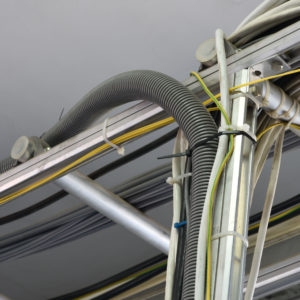 Polymer resin vents and wall caps provide superior protection and durability over their metal counterparts. But have you thought about alternatives to metal HVAC ducts and pipes? With the recent price increases in metal components, now is the perfect time to consider PVC for your next HVAC installation.
Polymer resin vents and wall caps provide superior protection and durability over their metal counterparts. But have you thought about alternatives to metal HVAC ducts and pipes? With the recent price increases in metal components, now is the perfect time to consider PVC for your next HVAC installation.
The impact of 25% tariffs on steel imposed by President Trump earlier this year is now being felt by the HVAC industry. The price of steel used for HVAC ductwork is a minimum 25% higher in the U.S. In some cases, the prices have increased by 35%. Other areas are feeling the impacts too. According to Sal Guatieri, senior economist at BMO Capital Markets, speaking to Global News: “If U.S. steel prices are going up, global steel prices are going up as well.”
PVC and CPVC are low-cost alternatives to metal with properties that are advantageous for use in HVAC, particularly in exhaust systems.
Polyvinyl chloride, or PVC, is commonly used in the construction industry for:
• Siding and windows
• Plumbing and drainage
• Wiring and cables
• Ductwork and vents
PVC is durable and not prone to corrosion or denting, which makes it a good option for ductwork. Because it resists moisture, PVC is preferred when you install ductwork directly beneath the floor in a building with no crawl space.
PVC has excellent insulating qualities, which again, makes it a good option for ductwork. One thing to keep in mind, however, is that there are limitations to how much heat PVC can withstand. The maximum temperature for PVC is 140˚F, which could make it inappropriate for some heating applications. An alternative to PVC for high-temperature applications is chlorinated polyvinyl chloride (CPVC), which can handle temperatures up to 200˚F.
CPVC is created by applying a free radical chlorination process to PVC, making it more heat resistant, but this creates a different set of vulnerabilities. Because there are vulnerabilities with both PVC and CPVC, you must always install using the correct type of sealant.
Both PVC and CPVC are also resistant to acidic and corrosive gasses that might damage metal ductwork, which makes them a good choice for exhaust ducting.
PVC is also commonly used for flexduct, often used to connect vents and grilles to the ductwork in a building. PVC is the preferred material for flexducts in commercial buildings.
CPVC can also be used as piping in hydronic heating systems. These applications require a thicker grade of PVC called schedule 80. The standard thickness of PVC is schedule 40. The PVC used for ductwork is thinner than schedule 40.
The limitations of PVC and CPVC
The main limitations of PVC and CPVC are the available sizes and weights of the material. Part of the reason PVC and CPVC are used in exhaust applications is they can handle high-pressure exhaust, and exhaust ducts generally span shorter distances than air delivery ducts.
PVC ducting is also narrower, so the velocity of the air increases over distance, so an uncomfortable blast of air may come out of your customers heat registers. PVC and CPVC also weigh much more than the thin steel used in ductwork, which will impact installation requirements.
Keep in mind when PVC is used for residential ductwork, you’ll need special adapters to connect it to metal components.
Cost used to be a big factor. PVC and CPVC were marginally more expensive. That could change soon. If steel prices remain high, you may see and increase in PVC and CPVC options. You might even see new products brought to market that better meet the needs of HVAC.




